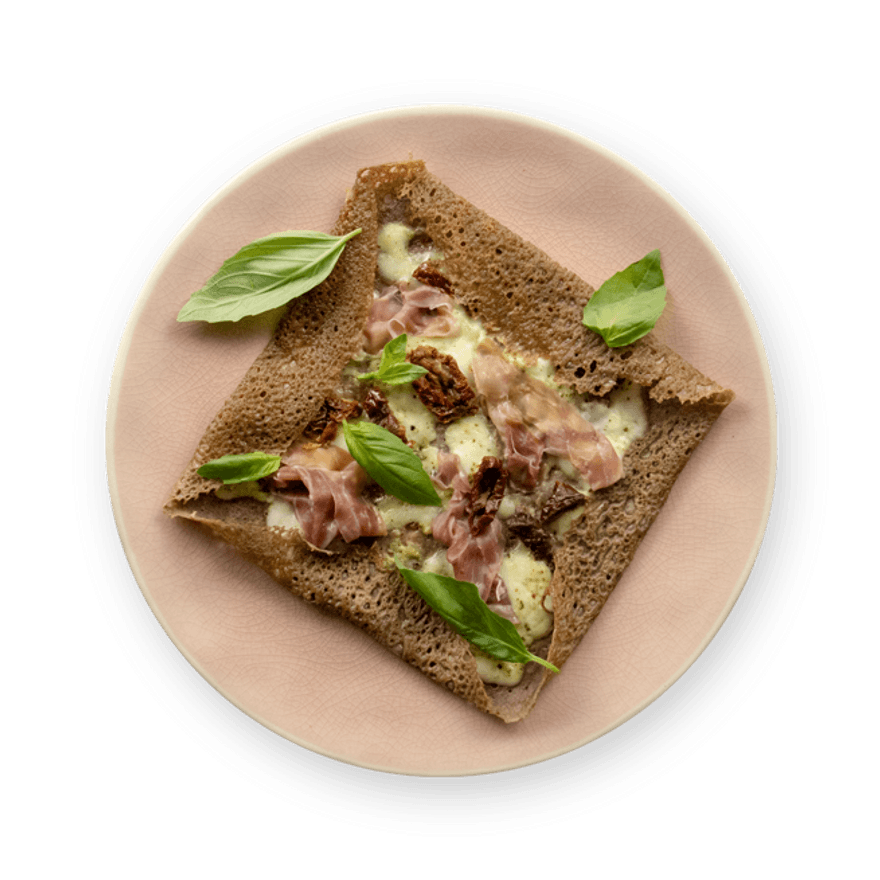Parma ham galette
728 reviewsThis is not a pizza but a savoury galette with a nod to Italy & its flavors !

Ingredients
Make sure you have...
Utensils
Stovetop, Frying pan
recipe

Step 1
Roughly chop the dried tomatoes.


Step 2
In a bowl, mix : the shredded mozzarella, pesto, salt & pepper.

Step 3
In a pan over medium heat, add a drizzle of olive oil and a galette.

Step 4
Spread the mozzarella/pesto mix onto the galette. Add the ham & dried tomatoes & leave to cook for 3 minutes, until the cheese is fully melted & bubbling.
Step 5
Fold the galette in half or into a square & add a couple of fresh basil leaves, if you have some. Serve with a side of salad seasoned to taste. Enjoy !

Try making buckwheat galettes & pesto from scratch ! Search "Buckwheat Galette” & "Homemade Pesto” in the app to learn how !
- Domitille, Food Editor
Personal notes
Add your own flavor!
Nutrition facts
Average estimated amount for one serving
| Energy | 549 cal. |
| Fat | 24 g |
| Carbohydrates | 52 g |
| Protein | 30 g |
| Fiber | 4 g |
Values are based on an average estimate for one serving. All nutrition information presented on Jow is intended for informational purposes only. If you have any concerns or questions about your health, please consult with a health-care professional.
On average, one serving of the recipe "Parma ham galette" contains 549 Energy, 24 g of Fat, 52 g of Carbohydrates, 30 g of Protein, 4 g of Fiber.
Price per portion
| € | Nos recettes à -2 € par portion |
| €€ | Nos recettes entre 2 € et 4 € par portion |
| €€€ | Nos recettes à +4 € par portion |
Please note, the price above is dependent on your grocer and the available products in the grocery store you chose.
Scores


D Nutri-score
The Nutri-score is an indicator intended for understanding nutritional information. Recipes or products are classified from A to E according to their food composition to promote (fiber, proteins, fruits, vegetables, legumes, etc.) and foods to limit (energy, saturated fatty acids, sugars, salt, etc.).
B Green-score
The Green-score is an indicator representing the environmental impact of food products. The recipes or products are classified from A+ to F. It takes into account several factors on the pollution of air, water, oceans, soil, as well as the impacts on the biosphere. These impacts are studied throughout the product life cycle.
Retrieving reviews...


